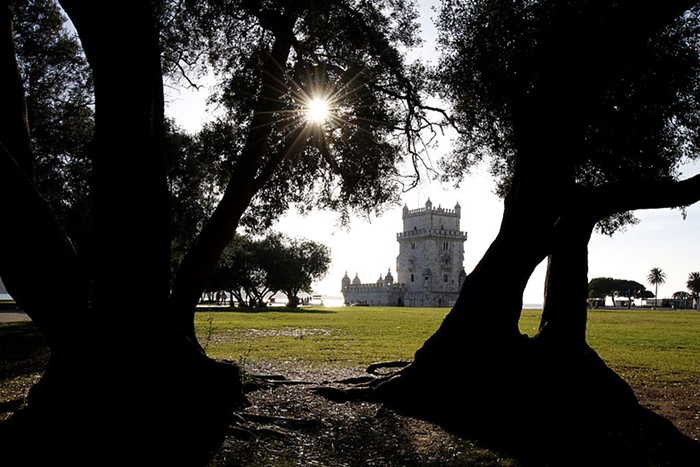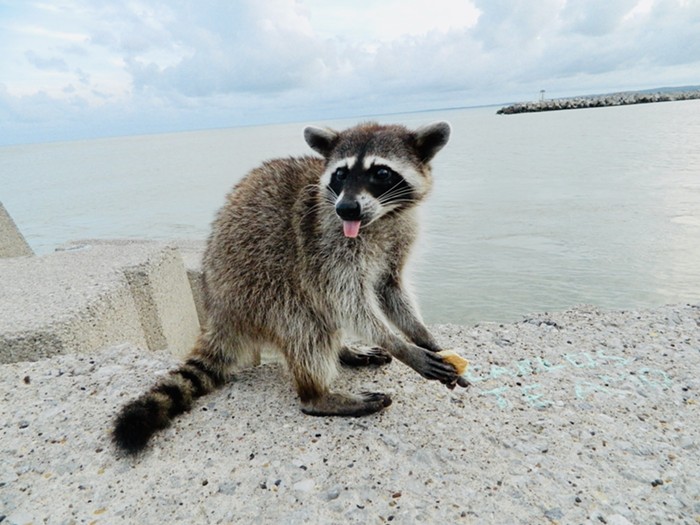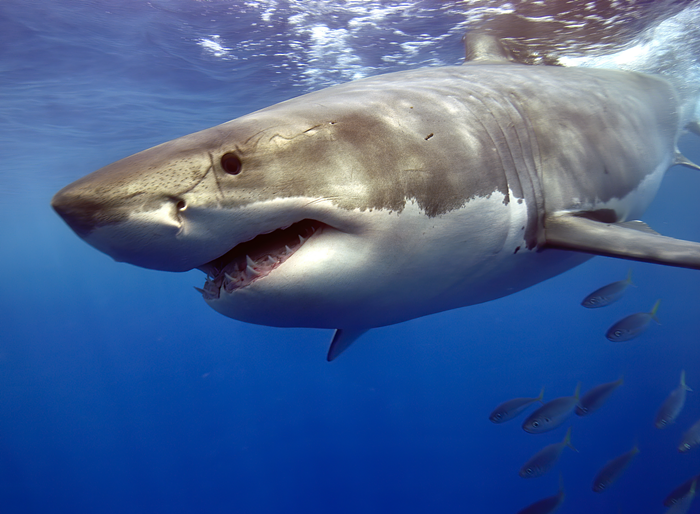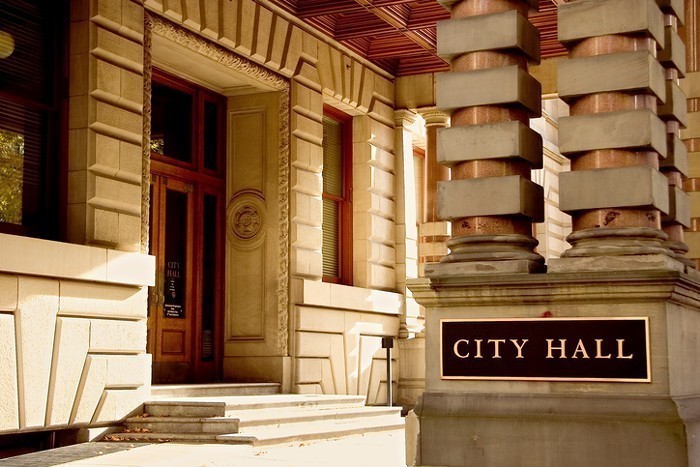
- Michelle Mitchell
- Bullseye Glass' facility, near SE Powell and 21st
With two Portland glassmakers suspending use of the carcinogens cadmium, chromium and, in the case of one, arsenic this week, Gov. Kate Brown announced on Monday: “These steps address the immediate concerns to public health in terms of air quality.”
But those materials aren’t the only potentially harmful substances Bullseye Glass and Uroboros Glass use, according to experts. Both companies use the element fluorine in producing specialty opaque glass.
According to one industry insider, fluorine in its various compounds makes up between 3 percent and 6 percent of that opaque glass's raw ingredients. The lower figure yields a milky, translucent glass, the higher a more densely opaque product. Another industry figure put it at 5 percent to 7 percent.
That's potentially of concern since the US Environmental Protection Agency's (EPA) hazard summary for hydrogen fluoride (a vaporized compound of fluorine and hydrogen commonly used by industry) states: “Chronic inhalation exposure of humans to hydrogen fluoride has resulted in irritation and congestion of the nose, throat, and bronchi at low levels.” Furthermore, “Damage to the liver, kidneys, and lungs has been observed in animals chronically exposed to hydrogen fluoride by inhalation.”
The claims regarding Bullseye and Uroboros come from two veteran members of the glass industry whose credentials the Mercury has verified. Neither was willing to speak for attribution, citing potential retribution from a small and insular art-glass world in which the two companies loom tall. Both profess to wanting Bullseye and Uroboros to thrive. For clarity, we’ll call them “Ted” and “Archie.”
As Ted put it, “The art glass world is a pretty small one and I don't need any grief.”
The Mercury has spoken on the phone and emailed with both men. Archie was given a tour of the Bullseye factory by its owner, Dan Schwoerer several years ago; Ted toured both factories in the same time frame.
Both men insist that the two Portland glass makers use fluorine compounds to produce the opaque or “opal” glass they sell.
Ted wrote, “About half of the glasses Uroboros and Bullseye make are what are called fluorine opals.” He added, “All their opaque, opalescent, opal, etc. glasses are absolutely, definitely using fluorides to opacify the glass.” The only exceptions are two, specific Bullseye white opal glasses.
Referring to the glass “batch”—that is, the mixture of raw ingredients that is melted into these glasses—Ted said that 5 percent to 7 percent of the total weight is fluorine. And of that, he writes, “About 40 percent of the fluorine is lost up the stack.” That's inevitable in a 2400-degree Fahrenheit glass furnace with no pollution control equipment.
As the Mercury’s previously reported, neither Uroboros nor Bullseye use filters to catch pollutants released in the glass-firing process.
“All the exhaust including fluorine…. was being freely blown out through the roof,” says Ted. “There were no filter stations to be seen in either factory, except a paper cartridge unit attached to Bullseye's batch room to filter batch dust.”
Ted and Archie's claims are echoed by a European Commission (EC) document on glass manufacturing issued in 2013 that states: “The addition of fluoride causes crystallization in the glass giving the characteristic cloudy and opaque appearance.”
Fluorine's effect when it combines with water in the air can be seen at Uroboros itself. Ted wrote, “Check out the etched and frosted windows in the Uroboros factory. That comes from the HF [hydrogen fluoride] generated from the [vaporized] fluorine gas combining with water in the air to create hydrofluoric acid.”
On a visit, Archie noticed the etched windows as well: “If you went into Uroboros, you might note all the windows are etched. That's fluorine doing that. Fluorine eats glass—lungs too.”
Asked about fluorine use by the two companies, Gov. Brown's spokesperson referred the question to the Oregon Department of Environmental Quality. DEQ spokesperson Jennifer Flynt emailed this statement: “There is currently little information both statewide and nationally about the emissions from the art and architectural glass manufacturing process…. This is the beginning of DEQ’s and EPA’s investigation of the art and architectural glass industry, and we expect to learn more about additional pollutants that we should be concerned about.”
Ted's claim regarding some 40 percent of the fluorine up the flue is supported by that 2013 EC report. It states, “Where fluorides are added to the batch … uncontrolled releases can be very high.”
But the releases don't have to be uncontrolled. Technology certainly exists to mitigate the fugitive emissions of fluorine. According to the EC, the choices are either baghouse filtration or an electrostatic precipitator. Neither company uses either of those air filtration systems; they've admitted that over the last two weeks.
The opaque glass being made in Portland doesn’t come cheap. The Uroboros online catalog issued in May 2013 lists 80 different opal glass products for sale. No prices are given, since Uroboros sells only through distributors.
But a Frederick, Maryland company, Anything in Stained Glass, lists a price of $41.44 for a 15 x 24 inch sheet of Uroboros Marigold Opal. An equivalent sheet of Uroboros Red Opal goes for $43.50.
A Bullseye catalog currently online lists 164 “solid color opal” products, which it sells for up to $198.35 for a 35 X 20-inch sheet and up to $36.85 for a one-pound jar of frit, or granulated glass.
Neither Uroboros nor Bullseye would answer questions about fluorine. Bullseye’s spokesperson declined comment. A spokesman for Uroboros hung up on the Mercury three times.
Daniel Forbes is the author of Derail this Train Wreck. He lives in Portland, and can be reached at ddanforbes@aol.com.
MORE COVERAGE:
State Finds Alarmingly High Arsenic, Cadmium Levels Near Two SE Portland Schools
Bullseye Glass Has Suspended Use of Arsenic and Cadmium Because of Air Quality Concerns
Portland Public Schools Is Ordering Air Tests Because of Arsenic, Cadmium Concerns: "We Need A Public Meeting"
Soil Near Bullseye Glass Contains Arsenic and Cadmium—And Other Things Officials Told Parents Thursday
Essential Pollution Controls Lacking at Two Glass Plants Blamed For Cadmium Emissions


















